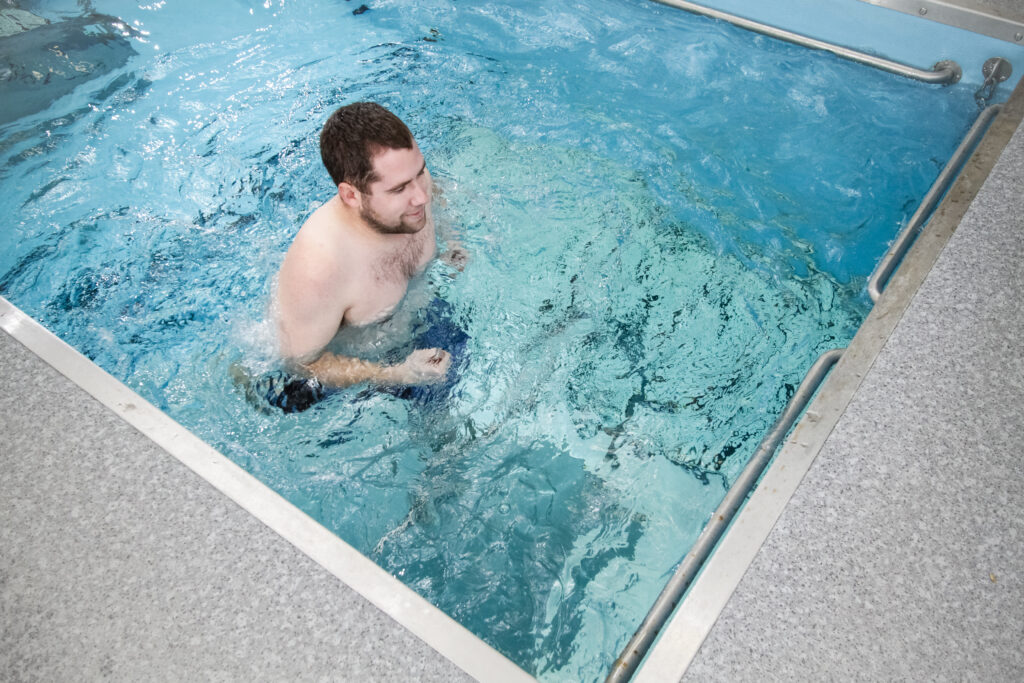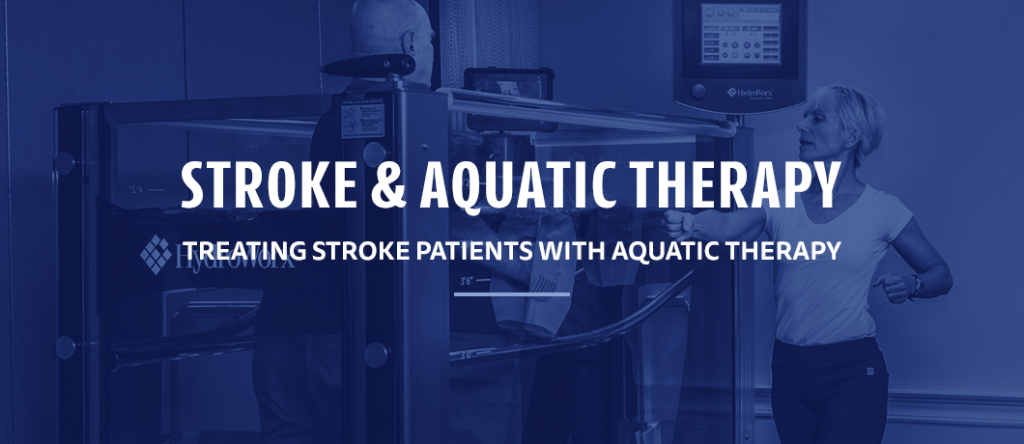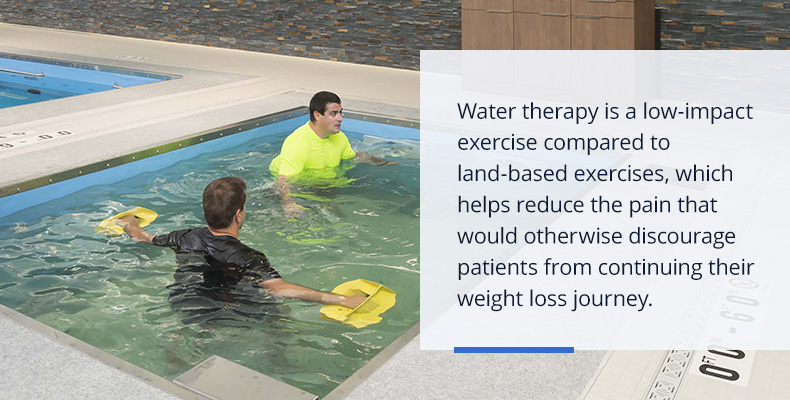Underwater Treadmill Benefits
Over the years there has been plenty of research done on underwater treadmills across several industries. Across health conditions and industries, underwater treadmills have a multitude of benefits.
Benefits of Underwater Treadmills
Underwater Running Reduces Muscle Soreness
Recovery is essential for all active individuals regardless of their level of activity. However, for competitive athletes specifically, recovery and reduced muscle soreness can be the difference in a win or a loss. For high-performing individuals, having an effective method for decreasing muscle soreness, decreasing time in between hard training sessions and decreasing recovery time frames is essential.
In a study conducted by The Department of Health & Kinesiology at Texas A&M, it was determined if short duration aquatic treadmill running reduces muscle soreness following intense sprint exercise in male athletes.
The study consisted of twenty trained men randomly divided in two groups; an aquatic underwater treadmill recovery group and a passive recovery group. After a 10 minute dynamic warm-up, the 20 participants performed sixteen 110 yard cutback runs with a sprint of 60 yards, change of direction and then a return sprint of 50 yards. After completing the 16 sprints, the aquatic treadmill recovery group performed underwater treadmill running on the HydroWorx underwater treadmill at 5mph for 10 minutes. The passive recovery group did not perform any type of recovery activity.
Following the recovery time period, each individual ranked their perceived soreness levels on a scale of 1-10. In each area evaluated, the individuals who performed the aquatic treadmill recovery following the sprint workout experienced significantly less pain and soreness. The athletes ranked their level of soreness in their legs, back, hips and abdomen. The overall soreness scores following sprint exercise were lower by a total of 1.9.
The conclusion from the study suggests that aquatic treadmill running significantly reduces perceived muscle soreness and may enhance recovery following intense sprint exercise in trained men.

Underwater Treadmill Training Can Impact Blood Pressure
There are an estimated 67 million Americans who suffer from high blood pressure. Many struggle to find ways to improve their condition naturally, especially those that are typically sedentary. Though it may be known that exercise can help lower blood pressure, many are unable or unwilling to exercise on land. Many times land exercise can be painful or difficult for those that are overweight or suffer from comorbidities such as arthritis or chronic pain.
In a recent study we found that while all endurance exercise can reduce blood pressure (BP) and the body’s related stress responses, aquatic treadmill training can significantly reduce resting diastolic blood pressure more than land-based training.
The study, conducted at Texas A&M University, tracked the response of 60 adults who worked out on either land-based treadmills or in a HydroWorx therapy pool on an underwater treadmill during specific sessions each week. The results from the study were that aquatic treadmill training, but not land treadmill training, significantly reduced resting diastolic BP, exercise systolic BP, diastolic BP, mean arterial pressure and pulse pressure during stages of exercise stress and recovery.
The great news is that not only does underwater treadmill exercise provide a safe, comfortable and less painful form of endurance exercise, it can be even more beneficial than land exercise.
Aquatic Treadmill Training Reduces Blood Pressure Reactivity To Physical Stress
A Texas A&M, published in Medicine & Science in Sports & Exercise, took a look at a lot of aspects of underwater treadmill training and its effects on adults. One major (and unexpected) finding was how aquatic treadmill training affected blood pressure. Sixty sedentary adults were randomly selected to be a part of either the land treadmill training group (LTM) or the aquatic treadmill training group (ATM) for 12 weeks. The maximal Bruce Treadmill test was performed before and after training and blood pressure was measured prior to, at the end of each stage and for 5 minutes following exercise testing. The maximal Bruce treadmill test is a standardized diagnostic tool used to evaluate cardiac function, which involves walking on a treadmill while being monitored by an electrocardiograph. Not only did they use this technical means of gathering data, they also went a step further and were able to get muscle biopsies from 12 of the participants. The muscle samples were tested for eNOS content (the controller of smooth muscle content).
The results of this 12 week study found that ATM, but not LTM, had a significant impact. It reduced resting diastolic blood pressure, exercise systolic blood pressure, diastolic blood pressure, mean arterial pressure, and pulse pressure during exercise and recovery. They also found that the ATM group also had an increase in skeletal muscle (but not the LTM group).
Aquatic Walking For Peripheral Artery Disease
According to the National Heart, Blood and Lung Institute, peripheral artery disease (PAD) is a common condition and circulatory problem which causes the arteries to become narrowed and stiffened due to an accumulation of plaque in the arteries. This accumulation of plaque or fatty deposits causes a reduction in blood flow which results in the limbs not getting enough blood to keep up with demand. The main symptoms of this condition include numbness or weakness as well as painful cramping in the legs during or after walking, climbing stairs and various other activities.
A recent research study was done to see if aquatic walking would help relieve arterial stiffness and pain in PAD patients. Participants for this study were recruited from health centers in South Korea to complete the twelve-week study. The participants were primarily female and had already been classified as Fontaine Stage I or II PAD patients. The trial was completed by 72 participants with no symptoms or adverse side effects that resulted from the training program.
Before the study began, the researchers conducted a baseline test on the participants where they measured arterial stiffness, resting heart rate and blood pressure among other things. During the study, the researchers found that patients were more comfortable in water because they experienced decreased joint loading and stress, and increased muscle relaxation due to the warm temperature of the water.
PAD patients are a high-risk population when it comes to exercising because their risk of falling is greater. As a result, they often miss out on the exercise they desperately need. Aquatic walking provided an exercise that removes the risk of injury from falling which made patients feel strong and confident while exercising.
The researchers of the study also concluded that aquatic walking is a beneficial and viable exercise option for patients who suffer from peripheral artery disease. The researchers noted that aquatic walking is more comfortable for patients and boosts not only their tolerance to exercise but also their cardiorespiratory capacity and muscular strength. The researchers also found that the study participants are more inclined to maintain an aquatic walking exercise regimen for treating and preventing PAD flare-ups.
Underwater Treadmills Help Chronic Stroke Patients
The effects of aquatic therapy on stroke patients is significant because it has been found that they typically experience impaired walking ability because of decreased balance. This decrease in balance can lead to falls, which decreases mobility, increases fear of falling and affects their ability to return to activities of daily living. Finding ways to improve gait and balance are critical to improving quality of life after a stroke.
An international study on the effects of underwater treadmill gait training with water-jet resistance on balance and gait ability in patients with chronic stroke showed that using resistance jets can have a beneficial effect compared to underwater treadmill gait training with ankle weights. Specifically, the study measured the effects on static balance, dynamic balance, gait velocity, cadence, step length, stride length and swing phase.
Twenty-two inpatient and outpatients who had impairments due to stroke were split randomly into two groups: one that performed underwater treadmill gait training with water-jet resistance, and one that performed underwater treadmill gait training with ankle weights. Both groups performed a 30-min traditional land-based physical therapy session followed by the underwater treadmill gait training.
Both groups showed progress, but the improvements in both static and dynamic balance were greater in the underwater treadmill and water-jet resistance group. Additionally, while both groups showed improvements in all of the following areas, the underwater treadmill and water-jet resistance group showed greater improvements in:
- Gait velocity
- Cadence
- Step length
- Stride length
- Swing phase

Underwater Treadmills Outperform Land-Based Treadmills
Athletes, weekend warriors and active adults may feel like a water workout is “too easy.” Often clinicians will question if their athletes or patients will be able to reach sufficient metabolic results on an underwater treadmill compared to a land-based treadmill that has the ability to incline, which raises the heart rate.
However, a new study from Utah State University, “Metabolic Cost Comparison of Running on an Aquatic Treadmill with Water Jets and Land Treadmill with Incline,” has shown that when athletes run on a HydroWorx underwater treadmill with high-powered resistance jets, the jets can be used to simulate and actually outperform land treadmill incline physical responses.
The study consisted of 18 participants who underwent trials on land-based and HydroWorx underwater treadmills. Participants’ metabolic cost (VO2 max) and heart rate increased in a predictable, linear fashion when the speed and incline increased on the land treadmill. However, when the same methods were applied to the aquatic treadmill by increasing the power of the resistance jets, individuals’ metabolic cost and heart rate jumped by unexpected, cubic amounts. When the resistance jets were at 100 percent capacity, participants showed physical effects that exceeded those that they displayed when running on a land treadmill at a 10 percent incline.
Aquatic Therapy Improves Balance & Stability
In 2010, the Center for Disease Control and Prevention (CDC) revealed that one third of persons ages 65+ can expect to fall annually. Thankfully, the majority of those who fall are able to return to their daily activities, but up to 30% percent will pass away from their falls, increase their likelihood of passing sooner and/or have to be hospitalized sooner as a result of the fall.
How can we help prevent that statistic from growing?
A recently published research study from Utah State University, “Effect of Aquatic Immersion on Static Balance,” was created with that question in mind. The study, authored by Talin J. Louder, compared the measures of static balance and limits of stability in both land and aquatic environments. During their research, Louder and his fellow study authors, including Utah State University’s Dr. Dennis G. Dolny, measured participants’ balancing abilities under three settings: on land, submerged in a HydroWorx therapy pool to the waist, and then submerged in the same pool to the chest. The results indicated that when they were in the aquatic environment, participants had to work harder to maintain their balance.
The results of this study indicate that aquatic therapy may provide a more promising and challenging environment to improve overall balance than land. At Stonehill Franciscan Services in Dubuque, Iowa, Director of Rehabilitation Rachel McDermott, PTA, regularly utilizes their HydroWorx 2000 Series therapy pool to improve patients’ overall stability and balance. As she notes, putting their patients in the pool and using the resistance of the water (as well as the resistance jets and variable-depth underwater treadmill floor) has been tremendously helpful.

Warm Water Therapy Helps With Mental Illness
At the Combined Sections Meeting of the American Physical Therapy Association (APTA) in February, Dr. Becker presented The Brain and Aquatic Therapy as part of the Aquatic Physical Therapy Section of APTA. Dr. Becker, a physiatrist with a lifelong interest in aquatic therapy thrives on researching the brain and aquatic therapy. As a physician for nearly 40 years, he has experienced patients with severe neuro problems, stroke, vision and spinal cord injuries. He is captivated by seeing how fast his patients’ recover in the water and how much they enjoy the process of aquatic therapy. It is a win, win.
On Friday, February 17 at the Combined Sections Meeting of APTA, Dr. Becker started his presentation by posing the question, “What the heck is happening?”
Through his research, Dr. Becker has discovered when patients are in the water they experience anxiety reduction and mental relaxation. During aquatic immersion in warm water, he also noticed nervous system activity is reduced and balance is improved. The combination of these effects may improve brain function with an increase in working memory, language skills and processing speed. Case reports have also shown that aquatic immersion positively impacts brain blood flow and exercise with Alzheimer’s, traumatic brain injury, autism, dementia and ADHD patients. Warm water immersion produces a balancing of physical activity and nervous system function which is associated with:
- Reduced cardiac irritability
- A drop-in blood pressure
- Decreased inflammatory processes
- Anxiety relaxation and mental relaxation
- Improvement in mood state and reduction in mood disorders
- Improvement in working memory
- Increase in cognitive task-performance, creative problem-solving and cognitive flexibility
During his presentation, Dr. Becker shared a client’s success story from his colleague, Dr. Kent Myers, MD, Medical Director at Royal Oaks Lifecare Community. Dr. Myers experienced a success with aquatic therapy and a dementia patient which was overwhelmingly impressive.
Case Study
Dr. Myers shared a story about a gentleman named Bill, who is a brilliant man but began developing dementia. Dr. Myers attempted to treat the disease with high dosages of medicine but it did not help. After the medicine did not work, Bill was placed in the dementia center and continued to deteriorate. He could only feed himself; he couldn’t stand or assist in his own transfers. He wasn’t able to follow the directions during physical therapy which is what gave Dr. Myers an idea. Why not try aquatic therapy? As soon as he got in the pool, Bill was present: he was able to talk, follow along with instructions and conversations. He was subjective while on land he was not. Once, he got into the pool it was like he woke up. It was remarkable when Bill turned around and looked at Dr. Myers with a big smile and waved.
Dr. Myers expresses how amazing it was to see how well he did both immediately and long term. During the second session, Bill was able to follow instructions as he did in the first session. He began using the chair lift to get in and out of the pool.
- He was able to perform 10 out of 45 minutes of modified watsu and halliwick.
- He was able to touch the floor half of the time in the pool and eventually in sessions later on, was weight-shifting and standing.
- He then began entering and exiting by the ramp and eventually the stairs with minimal assistance.
- The best part was when Bill put his head under the water and held his breath for 15.
It is remarkable to see a patient who was struggling with everyday tasks on land and then was able to feel alive again in the water.
“There are no medications that can do that to a person,” says, Dr. Myers who is trying to pinpoint the quantifying factor that led to such drastic physiological improvements in the water.
Dr. Becker ended his presentation by telling the audience that more research needs to be done because, “Happy brains are all wet.”
Hydrotherapy For Overcoming Obesity
A research study from 2009 conducted at Texas A & M University, shows the effectiveness of underwater treadmill exercise for overweight adults. The study titled, “Comparative Efficacy of Water and Land Treadmill Training for Overweight or Obese Adults,” was conducted in order to explore the efficacy of underwater treadmill exercise training programs by comparing changes in physical fitness, body weight and body composition in physically inactive, overweight and obese men and women.
Fifty-seven overweight men and women took part in this study and maintained dietary logs throughout a twelve week test period. Throughout that time period, the participants were instructed to make no alterations to their diet or physical activity outside of the exercise training protocol. The participants exercised three times per week on an underwater treadmill in the HydroWorx pool.
The underwater treadmill exercise training programs performed by overweight and obese men and women proved to be an effective training modality by producing beneficial changes in body composition and improvements in physical fitness. More lean body mass was gained with the underwater treadmill training program compared to a land treadmill training program. Additionally, body mass index, percent body fat and waist-to-hip ratio were significantly reduced in participants, as well as pain and risk of injury.
This study shows that underwater treadmill training is a viable alternative to traditional land treadmill training especially for overweight adults. Exercising on an underwater treadmill in an aquatic environment produces reductions in body weight, improvement in body composition and aerobic capacity in a twelve week period without dietary intervention.
Not only does underwater treadmill training provide impressive benefits, but it is often a more enjoyable form of exercise due to the reduced body weight and greater range of motion afforded by the buoyancy and warmth of the water.


